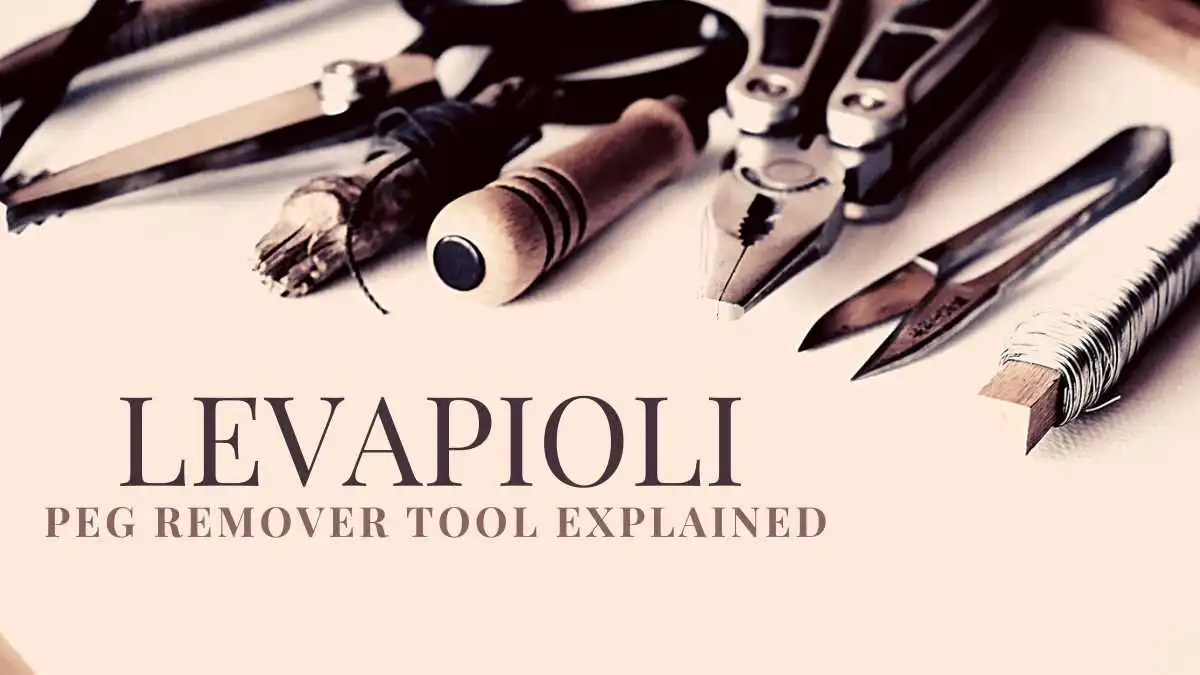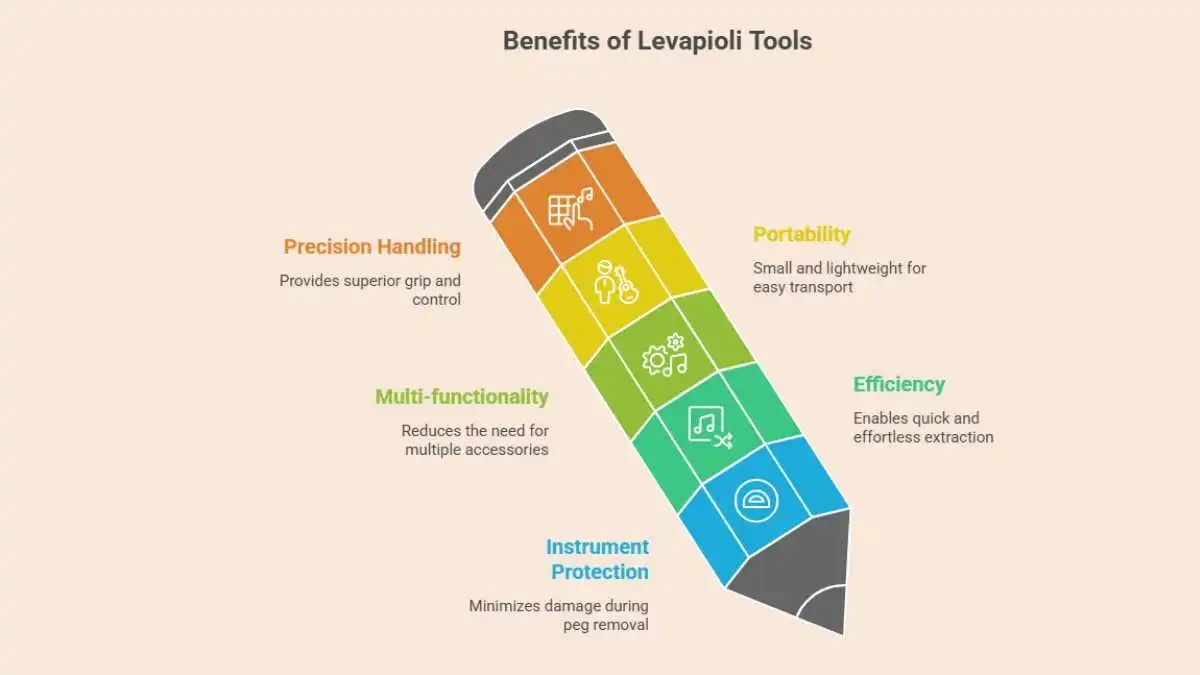GENERAL
What Is a Levapioli? Peg Remover Tool Explained

Levapioli is an Italian term derived from “leva” (lever or to lift) and “pioli” (pegs, nails, or pins). It refers to a small, handheld tool used primarily to remove tuning pegs or bridge pins from stringed musical instruments such as guitars, violins, or mandolins. Typically made from metal or plastic, levapioli operates using leverage to extract pegs without damaging the instrument.
Etymology and Origins
The word levapioli reveals much about its functional purpose. In Italian, leva refer to an object used to lift or pry something open, often a simple lever mechanism. Pioli, on the other hand, refers to small cylindrical components such as pegs or pins, commonly used in stringed instruments to secure strings either at the bridge or the headstock. Together, Levapioli suggests a lever-based tool for removing pegs, and that is precisely its function.
Historically, craftspeople and luthiers in Italy and across Europe needed practical tools to manage the delicate parts of wooden instruments without causing damage. The levapioli emerged from this need as a specialized, efficient, and ergonomic solution that remains widely used in both amateur and professional settings.
Design and Structure
A common levapioli is a small hand-held device which has been designed with usability and ease of use in mind. They are usually made of long-lasting materials, stainless steel, aluminium, or high-quality plastic, which are strong and still do not cause extra weight. It usually has a bent or notched tip (to help grip and lever out pegs or pins) and is not generally damaging to the surface of the instrument.
The levapioli has been incorporated into multi-functional instruments in most modern versions. These could be:
- String Cutters: The sharp blades can neatly clip off excess string.
- String Winders: devices used to wind or unwind tuning pegs efficiently.
- Pin Pullers: Special notches or scoop-shaped areas to hold and lift the bridge pin without any stress.
Applications for Stringed Instrument Maintenance
Stringed instruments require periodic maintenance, particularly string replacement, which involves removing bridge pins or tuning pegs. It ensures that these tasks can be performed without exerting undue force that could crack, dent, or warp the instrument’s delicate wooden parts.
For Guitarists:
In acoustic guitars, bridge pins hold the strings in place at the bridge. Removing them by hand can be difficult and risky. A levapioli provides the leverage to gently lift the pins out, preserving the structural integrity of the bridge.
For Violinists and Cellists:
Friction pegs used in violins, violas, and cellos are inserted into pegboxes and can become sticky or hard to turn due to changes in humidity or wear. Specialized levapioli tools allow luthiers to extract these pegs during maintenance or replacement without damaging the pegbox.
For Mandolin Players:
Considering that mandolins are highly delicate and small in their designs, the accuracy of such a tool as the levapioli is very instrumental in getting them to restricted areas and wresting them out without damage.
Advantages
- Instrument Protection: The tool minimizes the risk of cosmetic and structural damage during peg or pin removal.
- Efficiency: Its ergonomic design enables quick, effortless extraction, making string changes or repairs significantly faster.
- Multi-functionality: Many levapioli tools reduce the need for multiple accessories, making them ideal for gigging musicians, studio setups, and home use.
- Portability: Small and lightweight, it can easily fit in instrument cases, gig bags, or repair kits.
- Precision Handling: The tool’s design provides superior grip and control, allowing even beginners to perform maintenance tasks with confidence.

Importance in Luthiery and Instrument Repair
Luthiers, the craftsmen who make and repair the stringed instruments, depend on the instruments such levapioli to perform delicate operations needing care and control. An example would be when antique instruments are being restored; it is important to remove or drive pegs or pins, maintaining the wood grain and lacquer. It provides the very leverage and soft grasp required for such delicate tasks.
Besides, when new instruments are set, the levapioli makes sure that the installation and setting of strings are done without any problem. It is common on every luthier’s bench because of its preventive and corrective maintenance applications.
Tips for Choosing the Right Levapioli
There are a few things to look at when buying a levapioli:
- Material: Stainless steel can be very durable; plastic ones are lighter but can get better quickly.
- Design Fit: It should allow the pins or pegs of your instrument to fit perfectly in it.
- Extra Functions: To be convenient, use those models that have winders and cutters.
- Brand Reputation: Choose products of well-known brands on the market of musical instrument accessories.
- Comfort of a user: Handles must be ergonomic, and the operation should be smooth, as the user might have to use it continuously.
Conclusion
This levapioli, although small, has a very important role in the toolkit of all musicians, technicians, and instrument-makers. Not only can it safely undo tuning pegs and bridge pins, but it is also multifunctional, and thus it forms a basis of adequate instrument maintenance. The levapioli makes the job of changing (the) strings before a concert much more accurate, comfortable, and safe, and it makes the work of a luthier (he or she) restoring an old violin quite safer and easier.
-

 BIOGRAPHY7 months ago
BIOGRAPHY7 months agoBehind the Scenes with Sandra Orlow: An Exclusive Interview
-

 HOME1 year ago
HOME1 year agoDiscovering Insights: A Deep Dive into the //vital-mag.net blog
-

 HOME1 year ago
HOME1 year agoSifangds in Action: Real-Life Applications and Success Stories
-

 BIOGRAPHY1 year ago
BIOGRAPHY1 year agoThe Woman Behind the Comedian: Meet Andrew Santino Wife




























